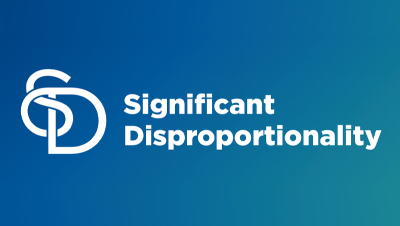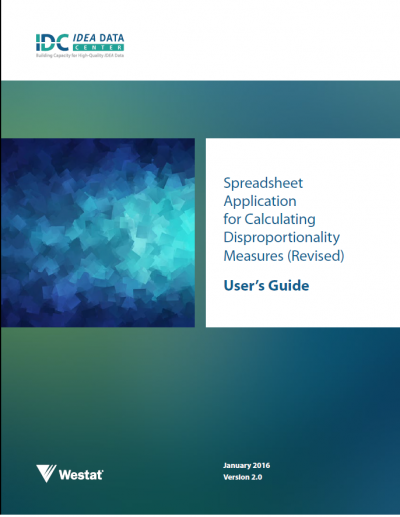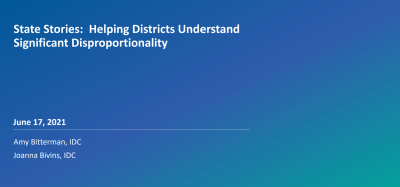Site Search
Results 8 - 14 of 15
-
Significant Disproportionality Summit
During our first Significant Disproportionality Summit on November 9 and 10, 2021, IDC brought states and districts together to discuss strategies, processes, and infrastructures related to significant disproportionality. The Summit included a keynote session followed by six plenary sessions focused on topics such as cultivating robust stakeholder teams, conducting root cause analysis, addressing different types of disproportionality, and evaluating improvement strategies. For each session, we present the session title and description, the recorded video, and the link to the PowerPoint slides.
-
State Stories: Celebrating and Supporting Improvement in Districts Identified With Significant Disproportionality
States are identifying districts with significant disproportionality and supporting them to address the root causes of the significant disproportionality. But are states seeing districts show improvement in significant disproportionality? What changes are districts achieving? How are states supporting these districts to improve the schooling experiences that lead to the identified disproportionalities and evaluate their progress? State and LEA panelists shared the small and large changes they have achieved, support strategies they have used, and lessons they have learned. Participants learned about ways states are working with districts to measure increments of change, evaluate progress, and make midcourse adjustments in policy and practice to address significant disproportionality.
-
State Stories: Helping Districts Understand Significant Disproportionality
Do you wonder how other states make districts aware of and help them understand their data related to significant disproportionality? How do states help districts understand their responsibilities when the state has identified them with significant disproportionality? What kinds of early warning systems do states use so districts understand when they are at risk for significant disproportionality? State panelists answered these questions and more during this IDC webinar. Attendees learned about proactive strategies states are taking to help districts understand and use data related to significant disproportionality, as well as other supports states provide for districts both before and after their identification with significant disproportionality.
Format: Applications and Spreadsheets
Significant Disproportionality Calculator and User's GuideThe Significant Disproportionality Calculator is a spreadsheet application that the IDEA Data Center (IDC) created to help states analyze their data, make determinations of significant disproportionality, and support local education agencies (LEAs) in their analysis of data for significant disproportionality at the school-level. The accompanying user’s guide describes each worksheet within the calculator, formatting requirements, and instructions for using the calculator.
Format: Quick Reference
Significant Disproportionality ResourcesThe Equity in IDEA regulations require states to determine annually if local education agencies (LEAs) are identified with significant disproportionality. The regulations outline specific requirements related to methods for identifying LEAs and activities the LEAs must complete after they are identified. These significant disproportionality resources can assist states with implementing these requirements and supporting LEAs through the process of meeting the requirements.
Format: Applications and Spreadsheets
Spreadsheet Application for Calculating Disproportionality Measures and User’s Guide: Spreadsheet Application for Calculating Disproportionality Measures (Revised)States can use the Excel spreadsheet application for calculating disproportionality measures and accompanying user's guide in their assessment of racial/ethnic disproportionality. The spreadsheet application calculates several disproportionality measures and the User’s Guide provides instructions for using the spreadsheet application.
Please note this resource is currently not 508 accessible. If you need assistance with the use of this resource, please contact us at www.ideadata.org.
Format: Guides and Briefs
Success Gaps Rubric: Addressing Equity, Inclusion, and OpportunityThis rubric allows a team of users from a district or school to systematically examine the root causes of success gaps among groups of students by focusing on equity, inclusion, and opportunity. The recently updated rubric now includes considerations for children as young as preschool age. A complementary white paper provided the research-based background that supported development of the rubric.








